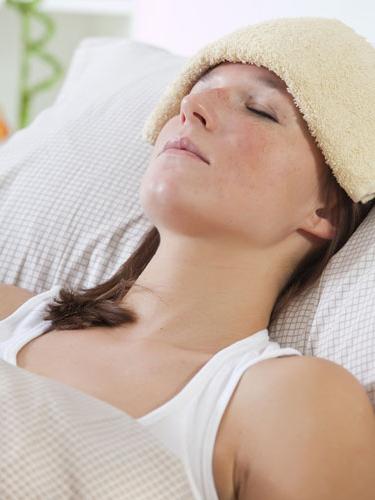In summer, the air temperature is extremely high, and if you like to stay outside for a long time at this time of the year, you should know the signs of sunstroke. Such knowledge will help determine the cause of an unexpected deterioration in well-being and take the necessary actions to prevent further aggravation of the condition.
So, usually the
first signs of sunstroke occur after six to eight hours in the heat, although at times they may appear earlier. First, there is general malaise, lethargy, nausea, shortness of breath, facial flushing, palpitations, fever, dizziness, pain in the head, darkening in the eyes. Then these signs of sunstroke can be supplemented by delirium, hallucinations, heart rhythm disturbance, which can manifest itself both in the increase in speed and in slowing down the frequency of heart contractions. If the necessary help is not provided at this stage, loss of consciousness may occur. The skin feels cold to the touch, becomes pale and bluish. This condition is already life threatening.
It should be said that, compared with an adult, signs of sunstroke in a child may appear with a much shorter stay in the heat. Young children suddenly become lethargic, naughty, refuse to eat. Over time, the temperature rises greatly, vomiting and diarrhea may open. After a few hours (in especially severe cases), convulsions begin, loss of consciousness occurs, the child may even fall into a coma.

If you find in someone (a child or an adult) signs of sunstroke, you must immediately take him to a cool place, unfasten his clothes and put him on one side. If a person is conscious, give him chilled tea or boiled water. You should drink in small sips. If there is a high temperature, you need to wrap the victim’s head with a wet towel or any other cloth, wipe the body with a sponge dampened in cool (slightly above room temperature) water. In this case, increased attention should be paid to areas where the vessels are closest to the skin: neck, axillary hollows, bends of the elbows, inguinal and popliteal areas. In no case do not use cold water for wiping: a sharp change in temperature can provoke a reflex
spasm of blood vessels, which only worsens the condition. Do not try to give antipyretic drugs to the victim in the hope of
lowering the temperature: such drugs are ineffective, because the mechanism for raising the temperature during overheating is completely different from, say, infectious diseases. But such medicines (ibuprofen, paracetamol) can be used to reduce other signs of sunstroke. Having provided first aid, you should call a doctor or deliver the injured person to the hospital yourself.
Do not want to detect signs of sunstroke? Then, when going outside on a hot day, wear a light-colored hat and clothing made of light natural material. People who have fair skin are more at risk for overheating. In the heat, try to avoid being outdoors during the period from 11 to 15 hours, because at this time the
sun's rays are as strong as possible. When on the beach, apply sun protection to exposed skin. To prevent overheating, drink as much liquid as possible and cool the surface of the skin with wet wipes.